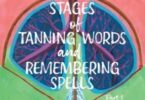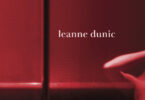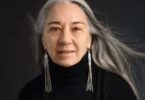Interview by Shawn Syms
In connection with the annual Victoria Festival of Authors taking place October 16 to 20, 2024, Plenitude book reviews editor Shawn Syms interviews Cody Caetano, author of the best-selling 2022 memoir Half-Bads in White Regalia, which was long-listed for Canada Reads and received an Indigenous Voices Award for Best Published Prose. Caetano, who is of Anishinaabe and Portuguese descent, is also a literary agent with CookeMcDermid.
In Half-Bads in White Regalia, Caetano explores the intricacies of a precarious childhood and coming of age. Set in Simcoe County, Ontario and in particular the “Sunshine City” of Orillia, the memoir covers economic insecurity, violence, substance use, and his family’s journey to find their place using distinctive prose characterized by the use of gamer slang, Anishinaabemowin terms and his own set of unique cultural code-words (“Canada,” for one, pointedly becomes “Little Miss Dominion”).
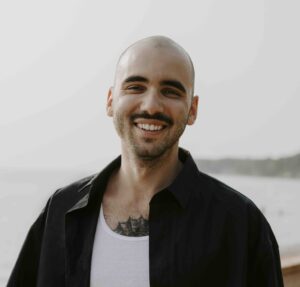 On October 19, you’ll be speaking at the Victoria Festival of Authors as part of a panel of debut memoir authors called “Memoirists Unite!” In the process of creating and publishing Half-Bads in White Regalia, have you found community with other writers working in this genre? And are there specific memoirists who have inspired you, in terms of their approaches to both form and content?
On October 19, you’ll be speaking at the Victoria Festival of Authors as part of a panel of debut memoir authors called “Memoirists Unite!” In the process of creating and publishing Half-Bads in White Regalia, have you found community with other writers working in this genre? And are there specific memoirists who have inspired you, in terms of their approaches to both form and content?
Dozens of writers in Canada published memoirs in the same season and time frame, which made it feel less lonely and intimidating and definitely informed my experience of releasing one. I’m thinking of Elamin Abdelmahmoud, Brandi Morin, Rollie Pemberton, Marsha Lederman, Darrel J. McLeod, Isaac Fitzgerald, Putsata Reang, Stuart Ross, but there’s so many others! When I began writing, memoirs by Frank McCourt, Jeannette Walls, Maya Angelou, and Mary Karr provided models for how I might write one.
While working on Half-Bads in White Regalia, you also established a reputation as a poet, publishing a chapbook and being short-listed or long-listed for some notable awards. Your memoir and poetry feature both a shared vocabulary and deep thematic resonances. How would you describe the relationship between your work in memoir and your poetic body of work? And would you say there are lessons that you have learned as a poet from a craft perspective that you apply as you continue your work in the realm of memoir?
I do not count myself as a poet, and don’t know if that delineation is personally important for me, as I don’t know if I write any differently when it comes to fiction or nonfiction or poetry. It’s just me!
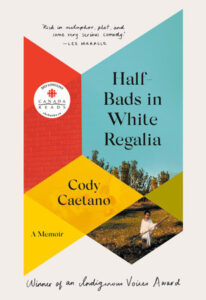 A big part of the joy of reading your memoir is the complexity of craft and the linguistic dexterity that is on display. Yet at the same time, your mode of writing is very approachable and accessible to the reader. I understand that the book is being considered for assigned reading in some high-school classes. To what extent do you consider young people to be part of your constituency or audience? And are the politics of literary accessibility something that you actively consider during the acts of writing and revision?
A big part of the joy of reading your memoir is the complexity of craft and the linguistic dexterity that is on display. Yet at the same time, your mode of writing is very approachable and accessible to the reader. I understand that the book is being considered for assigned reading in some high-school classes. To what extent do you consider young people to be part of your constituency or audience? And are the politics of literary accessibility something that you actively consider during the acts of writing and revision?
I think a 16-year-old can most likely handle a book meant for an adult, and we should encourage young people in our lives to read.
Author katherena vermette described your incantatory poem “why the sex addict is a porkchop preteNDN” as “like heartbeat, like a train, a call to arms.” In one of its many striking segments, you answer the titular question “cuz the academy swindled him / and he the academy.” As a storyteller with significant lived experience as well as a background in higher education, do you have any thoughts about what’s rewarding and what’s potentially problematic when it comes to creative-writing pedagogy in Canada?
Writing programs work for some people and not for others. They offer time and resources and professional accreditation. But they are by no means mandatory!
Without necessarily giving too much away, what are you finding most joyful and rewarding about the creative work that you are involved in right now?
The joy and reward can come from any and all creative acts. And while that does look like writing and drafting and thinking and researching and daydreaming, it might also look like refinishing wood furniture or donating clothes I haven’t worn in years, or a catching a runner’s high, or reading a manuscript or story from a writer I admire. It’s all connected, and all a gift.
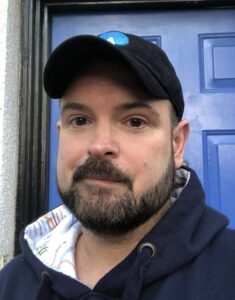 Shawn Syms (he/him) is a queer author and critic based in Toronto/Tkaronto. His reviews have appeared in the National Post, Quill & Quire, Xtra, Canadian Literature, Our Times, Foreword Reviews, Gay and Lesbian Review, Literary Review of Canada and elsewhere. His fiction has been shortlisted for the Journey Prize.
Shawn Syms (he/him) is a queer author and critic based in Toronto/Tkaronto. His reviews have appeared in the National Post, Quill & Quire, Xtra, Canadian Literature, Our Times, Foreword Reviews, Gay and Lesbian Review, Literary Review of Canada and elsewhere. His fiction has been shortlisted for the Journey Prize.


